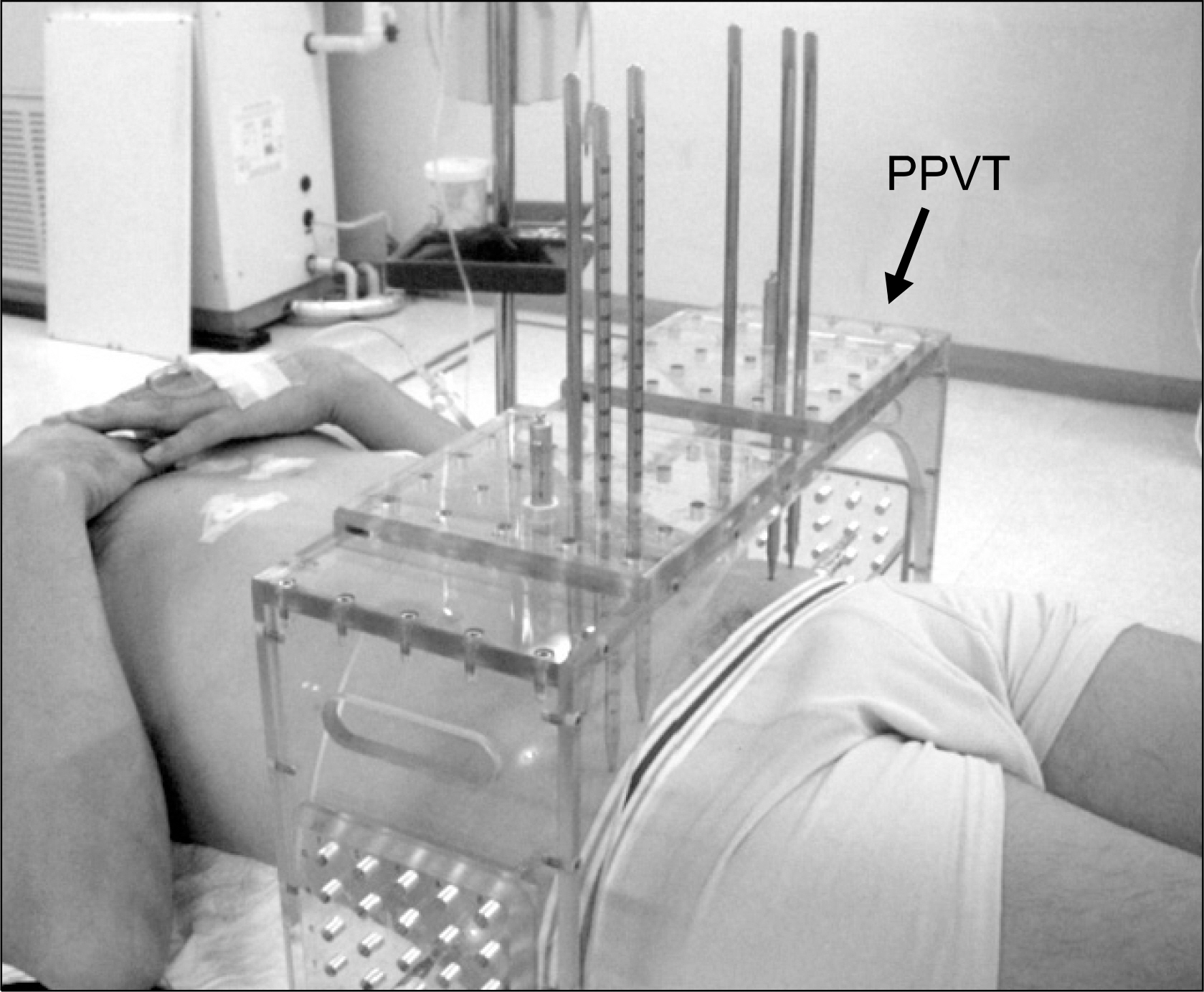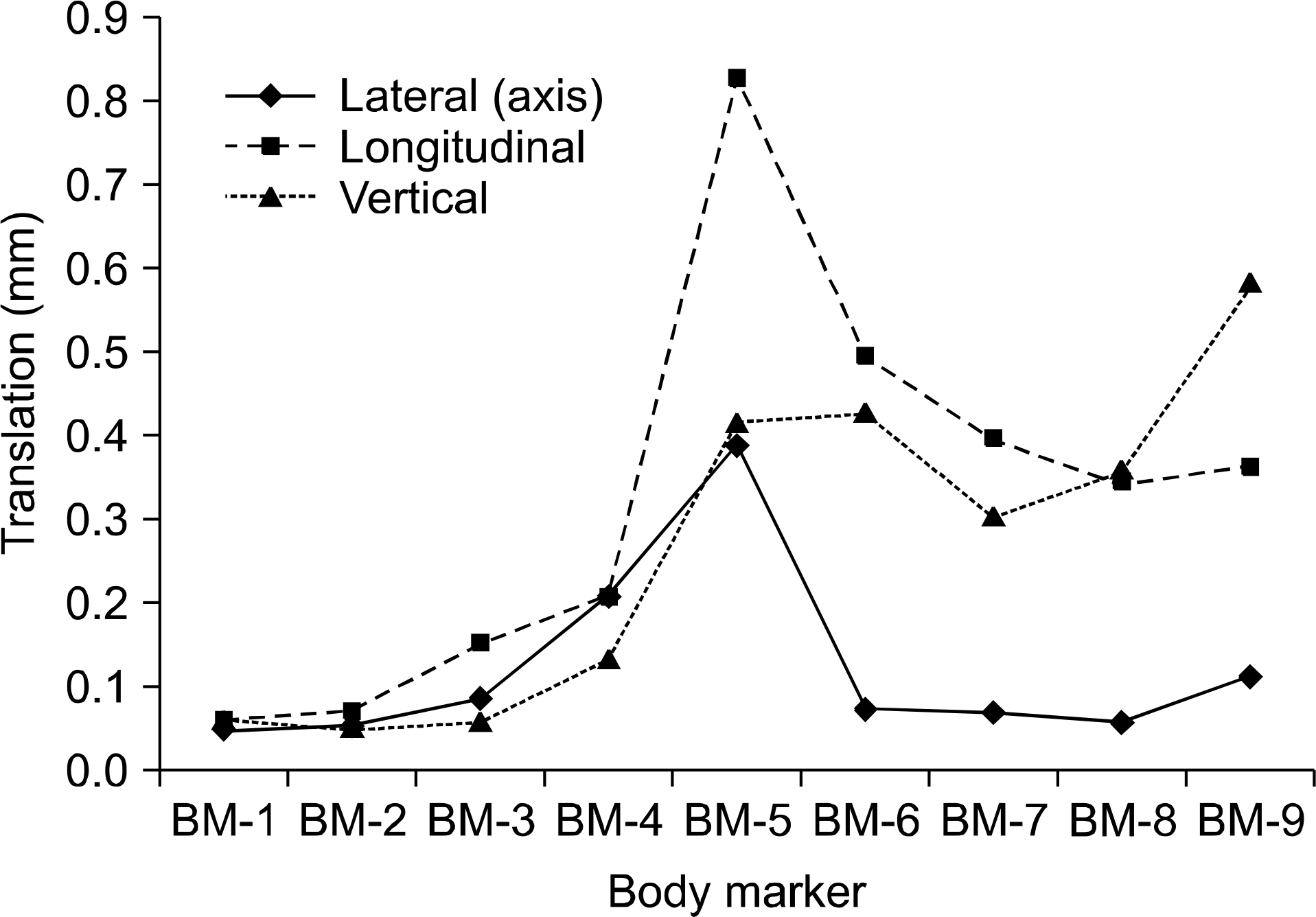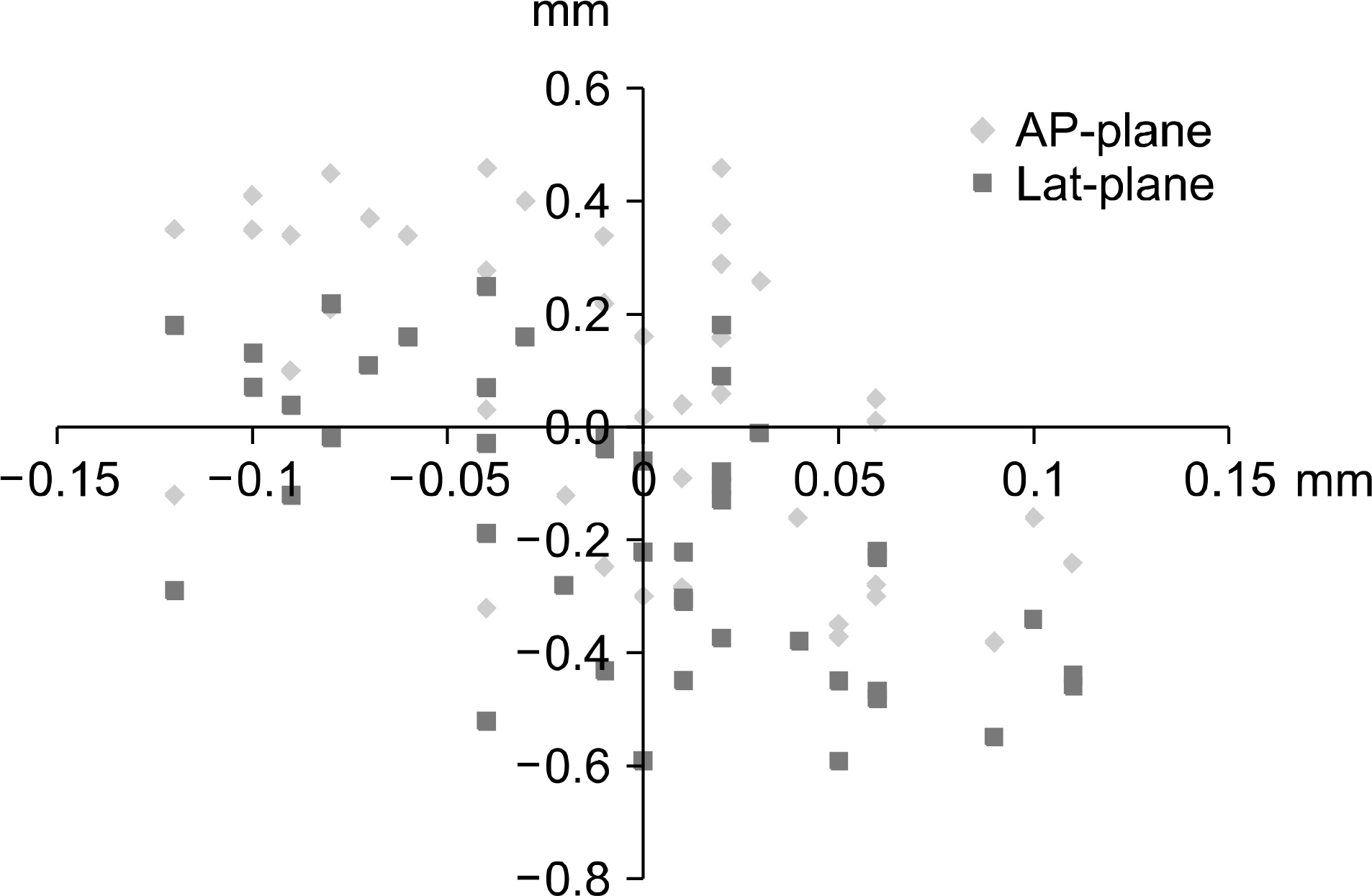Prog Med Phys.
2013 Dec;24(4):290-294. 10.14316/pmp.2013.24.4.290.
Evaluation of Real-time Target Positioning Accuracy in Spinal Radiosurgery
- Affiliations
-
- 1Department of Neurosurgery, Ilsan Paik Hospital, College of Medicine, Inje University, Goyang, Korea. djlee@paik.ac.kr
- KMID: 1910572
- DOI: http://doi.org/10.14316/pmp.2013.24.4.290
Abstract
- Stereotactic Radiosurgery require high accuracy and precision of patient positioning and target localization. We evaluate the real time positioning accuracy of isocenter using optic guided patient positioning system, ExacTrac (BrainLab, Germany), during spinal radiosurgery procedure. The system is based on real time detect multiple body markers attached on the selected patient skin landmarks. And a custom designed patient positioning verification tool (PPVT) was used to check the patient alignment and correct the patient repositioning before radiosurgery. In this study, We investigate the selected 8 metastatic spinal tumor cases. All type of tumors commonly closed to thoracic spinal code. To evaluate the isocenter positioning, real time patient alignment and positioning monitoring was carried out for comparing the current 3-dimensional position of markers with those of an initial reference positions. For a selected patient case, we have check the isocenter positioning per every 20 millisecond for 45 seconds during spinal radiosurgery. In this study, real time average isocenter positioning translation were 0.07+/-0.17 mm, 0.11+/-0.18 mm, 0.13+/-0.26 mm, and 0.20+/-0.37 mm in the x (lateral), y (longitudinal), z (vertical) directions and mean spatial error, respectively. And body rotations were 0.14+/-0.07degrees, 0.11+/-0.07degrees, 0.03+/-0.04degrees in longitudinal, lateral, table directions and mean body rotation 0.20+/-0.11degrees, respectively. In this study, the maximum mean deviation of real time isocenter positioning translation during spinal radiosurgery was acceptable accuracy clinically.
Figure
Reference
-
1. Gerstzen PC, Ozhasoglu C, Button SA, et al. Cyberknife frameless stereotactic radiosurgery for spinal lesions: Clinical experience in 125 cases. Neurosurgery. 55(1):89–99. 2004.2. Ryu S, Yin FF, Rock J, et al. Image-Guided and Intensity-Modulated Radiosurgery for Patients with Spinal Metastasis. Cancer. 97(8):2013–2018. 2003.
Article3. Yin FF, Ryu S, Ajlouni M, et al. Image-guided procedures for intensity-modulated spinal radiosurgery. J Neurosurg 101 (Suppl): 89-99. 2004.4. Agazaryan N, Tenn SE, Desalles AAF. Image-guided radiosurgery for spinal tumors: methods, accuracy and patient intrafraction motion. Phys. Med. Biol. 25:1715–1727. 2008.
Article5. Kim SY, Jin HS, Yang H, Amdur RJ, et al. A study target positioning error and its impact on dose variation in imageguided stereotactic body radiotherapy for the spine. Int J Radiation Oncology Biol Phys. 73(5):1574–1579. 2009.6. Linthout N, Verellen D, Tournel K, Storme G. Six dimensional analysis with daily stereoscopic x-ray imaging of intrafraction patient motion in head and neck treatments using five points fixation masks. Med Phys. 33(2):504–513. 2006.
Article7. Benedict SH, Yenice KM, Followill D, et al. Stereotactic body radiation therapy: The report of AAPM Task Group 101. Medical Physics. 37(8):4078–4101. 2010.
Article8. Andrews DW, Bednarz G, Evans JJ, Downes B. A review of 3 current radiosurgery systems. Surgical Neurology. 66:559–564. 2006.
Article9. Stock M, Kontrisova K, Dieckmann K, et al. Development and application of a real-time monitoring and feedback system for deep inspiration breath hold based on external marker tracking. Med. Phys. 33(8):2868–2877. 2006.
Article10. Liu W, Wiersma RD, Mao W, et al. Real- time 3D internal marker tracking during arc radiotherapy by the use of combined MV-kV imaging. Phys Med Biol. 53:7197–7213. 2008.11. Baroni G, Ferrigno G, Orecchia R, et al. Real-time three-dimensional motion analysis for patient positioning verification. Radiotherapy and Oncology. 54:21–27. 2000.
Article12. Medin PM, Solberg TD, DeSalles AAF, et al. Investigations of minimally invasive method for treatment of spinal malignancies with linac stereotactic radiation therapy: Accuracy and animal study. Int J Radiation Oncology Biol Phys. 52(4):1111–1122. 2002.
- Full Text Links
- Actions
-
Cited
- CITED
-
- Close
- Share
- Similar articles
-
- Evaluation of Real-time Measurement Liver Tumor's Movement and Synchrony(TM) System's Accuracy of Radiosurgery using a Robot CyberKnife
- Radiosurgery for Spinal Lesions
- Optimization of Dose Distribution for LINAC-based Radiosurgery with Multiple Isocenters
- Review of Stereotactic Radiosurgery for Intramedullary Spinal Lesions
- Novalis Stereotactic Radiosurgery for Spinal Dural Arteriovenous Fistula





